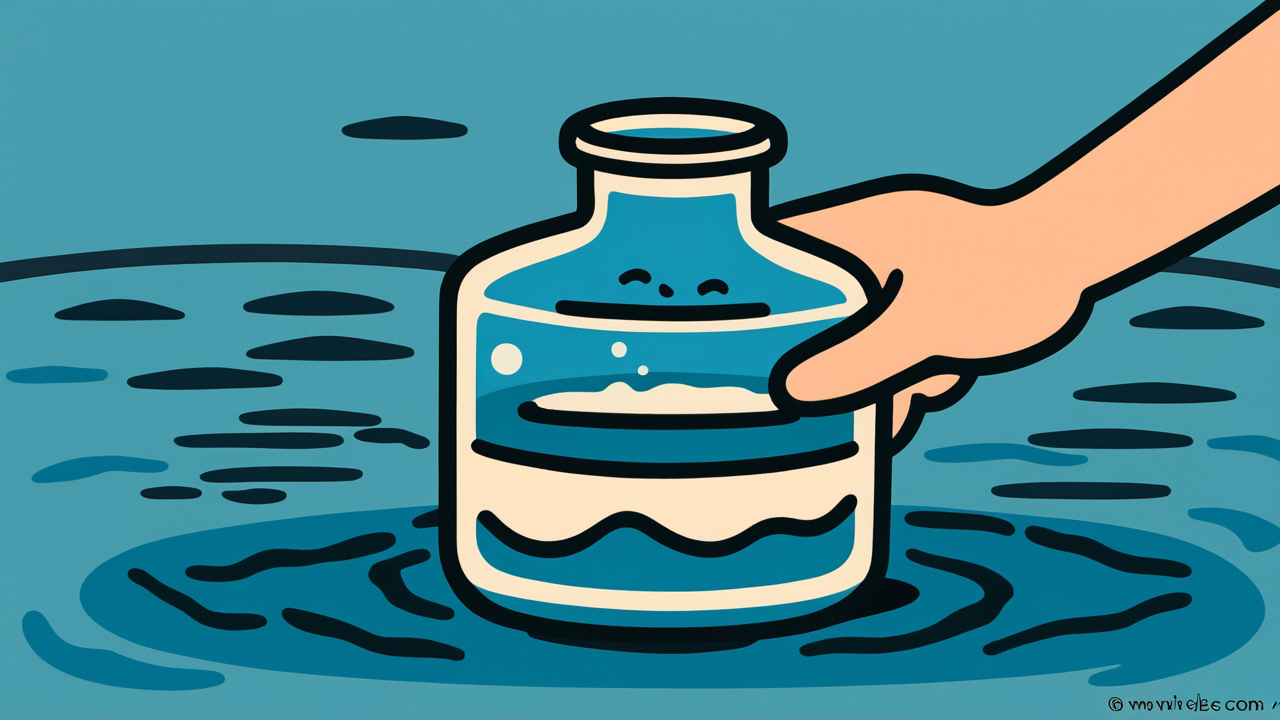How to Read “水は方円の器に随う”
Mizu ha houen no utsuwa ni shitagau
Meaning of “水は方円の器に随う”
This proverb expresses the importance of people flexibly adapting to their environment and circumstances, just as water takes a square shape when placed in a square container and a round shape when placed in a round container.
The word “follows” here doesn’t simply mean being swept along. Just as water conforms to the shape of a container while never losing its essential nature as “water,” this carries the deep meaning that people should adapt to their environment while preserving their own essence. This proverb teaches the wisdom of responding flexibly to situations rather than stubbornly clinging to one’s own methods. It is used as advice for people who cannot adapt to new workplaces or environments, or as encouragement for those who fear change. Even today, as globalization and technological innovation advance, the importance of this flexibility continues to grow.
Origin and Etymology
“Water follows square and round vessels” is a proverb that originates from Chinese classics. “Square and round” means square and circle, representing various shapes of containers. It’s an expression born from water’s nature of freely changing to match the shape of its container.
The source of this proverb is thought to trace back to ancient Chinese philosophical texts. It is particularly considered to be deeply related to the concept of “softness overcomes hardness” found in Laozi’s philosophy. It strongly reflects the influence of Eastern thought that views water’s flexibility as an ideal way of being.
It is presumed to have entered Japan through the transmission of Chinese texts along with the introduction of Buddhism. Similar expressions can be found in literature from the Heian period onward, suggesting it was familiar among Japanese intellectuals from quite early times. During the Edo period, it spread among common people and became established as a moral teaching.
What’s interesting is that this proverb is not merely worldly wisdom, but has deep Eastern philosophical thought as its background. It contains the wisdom of ancient people who explained the ideal way of human existence through the nature of water.
Usage Examples
- At my new job, I’ll follow the saying “when in Rome, do as the Romans do” and work hard with the spirit of “Water follows square and round vessels”
- She gets along well in any workplace – she’s truly the “Water follows square and round vessels” type
Modern Interpretation
In modern society, this proverb has acquired new meaning. As globalization advances, opportunities to collaborate with people of different cultures and values are increasing, making flexible adaptability an even more important skill.
However, in modern times, the concept of “adaptation” has become complex. With the spread of social media, we belong to multiple communities simultaneously and need to conform to different “vessels” in each one. We’re required to change into various “shapes” even within a single day – a serious face at work, a friendly attitude with friends, a gentle expression with family.
On the other hand, modern society has also strengthened values that emphasize “being oneself” and “individuality.” This may seem to contradict this proverb at first glance, but just as water’s essence doesn’t change, true individuality might be that core part that isn’t lost even while adapting to the environment.
The rapid changes in technology also heighten the modern significance of this proverb. In an era where people who can quickly adapt to new tools and systems achieve success, “water-like” flexibility is competitive advantage itself.
When AI Hears This
Water becomes round when placed in a round container, and square when placed in a square container—this seemingly obvious phenomenon is actually the “ideal property” that cutting-edge materials science desperately pursues.
Currently, scientists are developing a revolutionary material called “liquid metal.” This is an amazing substance that freely changes shape like a liquid at room temperature while maintaining the electrical conductivity of metal. For example, when liquid metal is injected into a broken electronic circuit, it flows along the circuit’s shape just like water conforming to a container, instantly repairing it.
Even more fascinating is shape memory alloy. This metal has the property of returning to its “memorized shape” when heat is applied, which is precisely an attempt to recreate water’s adaptability in solid form.
Traditionally, we have thought that “solids are hard and don’t change shape” and “liquids are soft and have no fixed form.” However, the latest materials science aims to create substances that, like water, “change form as needed while performing required functions.”
In other words, the property of “conforming to the container” that ancient people recognized in water was not passive weakness, but rather “ultimate functionality”—taking the optimal form according to circumstances. Modern science may finally be beginning to understand the perfect adaptation strategy that water has demonstrated for thousands of years.
Lessons for Today
What this proverb teaches modern people is the importance of having the courage to accept change without fear. We tend to cling to familiar environments and methods, but doing so causes us to miss opportunities for growth.
What’s important is that adapting and losing oneself are different things. Even when water changes shape to match its container, its transparent and pure essence remains unchanged. Similarly, we can adjust our actions and attitudes to match our environment while carefully protecting our “core” of values and beliefs.
In modern society, there are increasing situations where we need to adapt to new environments, such as remote work, career changes, and international collaboration. In such times, remember the teaching of this proverb. There’s no need to rush to adapt perfectly. Like water, slowly but surely, you can become accustomed to new forms. By doing so, your own possibilities will also show new expansions to match the shape of the vessel.



Comments